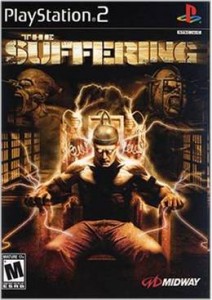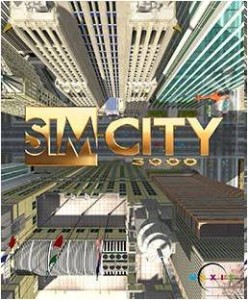I have a longstanding interest in the way videogames imagine a part of our cultural heritage that many of us might enjoy experiencing in a game or on a cinema screen, but which we’d presumably rather not know firsthand, and that is the role of prisons, asylums, and hospitals in recent and contemporary life. My interest in virtual prisons stems from work I’ve done on torture in videogames about terrorism—games like Splinter Cell and 24. Though I didn’t register this fact in my earlier research, in hindsight I’ve realized that torture for the purposes of interrogation, on those rare occasions that it appears in videogames, always happens in situ, an improvised technique performed on-the-spot at the time of the suspected terrorist’s apprehension.

One of the effects of this immediacy is that the actual sites of torture in real life are erased from videogames: the CIA’s black-site prisons in Eastern Europe, Abu Ghraib in Iraq, the extraordinary rendition of alleged terrorists to Egypt, the Guantanamo Bay Detention Camp. Videogames short-circuit the route between the capture of supposed terrorists and the function they serve in the acquisition of intelligence or prevention of future attacks (whether or not these two functions are actually realized). The prison, the detention center, the camp—they all disappear from videogames about terrorism, just as the prisoners in these spaces disappear in real life.
This disappearance of institutional sites of imprisonment and interrogation in videogames, replaced by on-the-spot interrogation is an example of what Ian Bogost calls procedural rhetoric, the implicit or explicit argument a computer model makes. In the case of videogames set in the war on terror, the games model a version of torture-interrogation that eliminates prisons, replacing a bureaucratic, systemic structure of containment and abuse with an individualized, heroic quest for the truth.
I’ve struggled with a way to intervene into this egregious misrepresentation, and I’ve decided that rather than dwell upon games that expunge prisons from the record, it’s productive to turn to videogames that integrate them directly into gameplay. Roughly speaking, prisons figure in videogames in one of two ways. First, there are games of confinement and its corollary, escape. Using the prison as a particularly evocative claustrophobic narrative space, these games have the player assume the identity of an often unjustly imprisoned inmate, attempting escape under extraordinary circumstances (a research experiment gone wrong, an invasion of demonic monsters, and so on). The survival horror franchises The Suffering and Manhunt are well-known examples of these games of confinement and escape.

The second type of prison game is the game of control, in which the player’s job is to manage the prison on either a micro or macro-level. Unlike the first category of games, which tend to be first-person shooters using a subjective point of view, these control games rely on an omniscient perspective, the kind many of us are familiar with from simulations like Civilization and SimCity.
I find it extremely suggestive that these two types of prison games—containment on one hand and control on the other—map onto two models of society that the philosopher Gilles Deleuze speculates have dominated modern history. Borrowing from Foucault, Deleuze calls the first model “disciplinary societies.” These societies are marked by “vast spaces of enclosure” (3): schools, factories, prisons, barracks, hospitals, asylums. In disciplinary societies, individuals are always located within one of these closed, regulated worlds, and the moment the individual leaves one closed space, he or she enters another. Deleuze suggests that in the final decades of the 20th century and onward into the new millennium, these disciplinary societies are being supplanted by another kind of social model, what he calls “societies of control.” Societies of control are marked by ubiquitous and flexible “ultrarapid forms of free-floating control” (4). Whereas disciplinary societies rely on strictly delimited yet enduring bureaucratic institutions, societies of control are never static; they are always in a state of modulation, the control coming from decentralized and dispersed mechanisms. One can go wherever one wants in a society of control, but that movement is tracked, traceable, and even predefined. Deleuze uses the idea of an interstate to illustrate the essence of societies of control, observing that on the freeway system “people can drive infinitely and ‘freely’ without being confined at all yet while still being perfectly controlled” (Kaufman & Heller 18).
I’m hardly the first to connect Deleuze’s ideas to videogames. In fact, Alexander Galloway, whom both Trevor and Rob have mentioned in their posts on cultural and historical simulations, argues quite forcefully that resource management games like Sid Meier’s Civilization series are the ideal medium for societies of control. According to Galloway, the Civ games are not so much about whatever fictional or historical world they claim to simulate, but are instead “about information society itself”—about our contemporary network-centric, database-driven society. Videogames, Galloway writes, “don’t attempt to hide informatic control”—something you’d expect to see in a disciplinary society—instead “they flaunt it” (35).

Consider the history of the SimCity series as an illustrative example of the shift toward a society of informatic control. Designed and coded by the legendary Will Wright, SimCity was first released by Maxis in 1989, and with each update to the game—SimCity 2000 in 1993 and SimCity 3000 in 1999 and so on—the game has incorporated more sophisticated controls with an increasing array of variables to manage. For example, the original SimCity did not have jails. As I’ve analyzed elsewhere, crime was a function of local police stations. Jails were introduced to the game in SimCity 2000. Like police stations in the original, they exist only as a function in a formula, albeit a more complicated algorithm than the original (for example, prisons will reduce crime, but they will also lower property values). SimCity 2000 also introduced nine types of power plants, new hospitals, museums, and so on. SimCity 3000 introduced sewers and waste management and a host of other innovations.
In every case, the proliferation of options and the flexibility afforded by the game—whether it’s deciding where to build fire stations or what the business tax rate should be—is in fact an elaborate schematic of control. Like the interstate system, the game presents an apparently open system with countless configurations, yet it is one that will take into account the player’s every action. Every choice the player makes is a mathematical variable, fed into the game’s algorithmic machine, and hence no action is ever outside the game’s informatic system. This free-form totalizing calculus is what leads Galloway to read a videogame like Civilization as an allegory for our own larger society of control.
In future Play the Past posts I want to look at two games obviously influenced by Will Wright and Sid Meier’s work but which focus directly on prisons themselves: the discount Prison Tycoon series and the Tropico series. I’ll consider these games as allegories of control in the same vein as SimCity, but also as games that are much more historically rooted, even when they appear to erase history.
Bibliography
Deleuze, Gilles. “Postscript on the Societies of Control.” October 59 (1992): 3-7.
Galloway, Alexander. “Playing the Code: Allegories Of Control In Civilization.” Radical Philosophy 128 (2004) : 33-40.
Kaufman, Eleanor, and Kevin Jon Heller, eds. Deleuze & Guattari: New Mappings in Politics, Philosophy, and Culture. Minneapolis: University of Minnesota Press, 1998.
In the case of videogames set in the war on terror, the games model a version of torture-interrogation that eliminates prisons, replacing a bureaucratic, systemic structure of containment and abuse with an individualized, heroic quest for the truth.

Just to be pedantic, there’s a prison torture scene in Metal Gear Solid 3. I’m sure there are others too. But this shouldn’t detract from your main argument, which is fascinating.
Great post, thanks!
Great post! In general I think your identification of genres dealing with torture and prisons makes a lot of sense. Another example of the impromptu interrogation technique is the hit-someone-till-they-tell-you-the-answer-and-then-kill-them approach in assassin’s creed. Your post also makes me think that (if someone hasn’t already) someone should write a history of Arkham Asylum in comics, television, video games and lego sets, to the recent stunt Arkham site ArkhamCare.com
@Trevor – Thanks for bringing up the example of Assassin’s Creed. I haven’t played the game, but it strikes me as another example of that in situ interrogation I talk about (albeit a crudely rendered one). In my initial research I had focused on videogames explicitly set within the context of the so-called War on Terror, but it’s worth expanding the scope of games I consider (including Metal Gear Solid 3, which @Rachel mentions above.
Assassin’s Creed is carefully situated in another historical period, very deeply othered in time and place… until you get to the framing story, which takes place in (I think) the near future, and in Canada (or a generalized Western city). The main character is being held against his will. Perhaps there’s something to be done with that othering/framing mechanism.
@Trevor – Also, your idea about Arkham Asylum is great. I wonder whether insane asylum games are a subcategory of prison games, or if they should be considered as an entirely separate kind of game. In any case, there’s a rich history of insane asylums in videogames. One of the first interactive fiction games I ever played, even before Zork, was Bedlam, for the TRS-80 Color Computer in the very early eighties.
Great post, setting up a nice approach for your next posts.